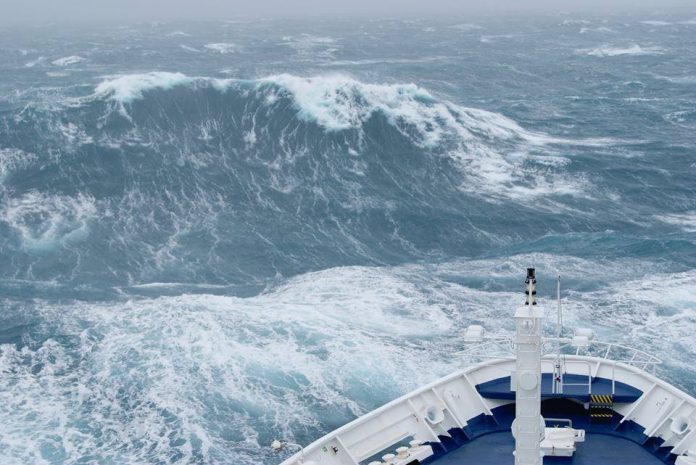One person has died and four more were injured after a giant wave crashed into a cruise ship on an Antarctic expedition.
The Viking Polaris ship was sailing south of Cape Horn in stormy conditions.
The Norwegian cruise company Viking said the ship was battered by a “rogue wave” that smashed several panes of glass in the cabins.
“We wondered if we hit an iceberg. And there are no icebergs out here, but that’s how it felt,” one passenger told North Carolina news site WRAL.
The incident occurred on Tuesday at 22.40pm local time, AFP reports.
What has cruise company Viking said about the incident?
“It is with great sadness that we confirm that a passenger died following the incident,” the cruise company said in a statement.
“We have notified the family of the guest and shared our deepest condolences.”
The company has not yet confirmed the gender or nationality of the victim.
Four other passengers on the ship sustained injuries that are not believed to be life-threatening. They were treated by the onboard medical team.
Viking says the ship suffered minor damage during the event. The company says it is “investigating the facts surrounding this incident.”
Where was the Viking Polaris ship headed?
The cruise was headed to Ushuaia, 3,200 kilometres south of Buenos Aires. This is the most common starting point for expeditions to Antarctica.
The Viking Polaris was launched in 2022 as the latest cruise from the Norwegian company. The ship can carry 378 passengers and a crew of 256.
The expedition has been halted and the company says it is arranging return travel for guests and crew.
“Our focus remains on the safety and wellbeing of our guests and crew, and we are working directly with them to arrange return travel. A two-week journey of stunning views – cut short,” Viking added in the statement.
What is a ‘rogue wave’?
The cruise company said the incident was caused by a “rogue wave” hitting the ship.
Scientists often use this term to imply extreme storm waves that seem to rise up out of nowhere.
The US government’s National Ocean Service describes these waves as “large, unexpected and dangerous.”
They can look like a towering wall of water, sometimes double the size of surrounding waves.
One of the tallest ever recorded was over 18 metres high, about as tall as a four-storey building.
Tales of these waves can be found throughout the centuries in maritime folklore, also referred to as “freak” or “killer” waves.
But it is only in the last decades that scientists have accepted them as a real phenomenon.
Scientists say they often surge up unexpectedly from directions other than prevailing wind and waves, and they can even appear in relatively calm waters.
How common are deaths from rogue waves?
This is not the first time a freak wave has caused deaths or injuries to cruise ship passengers.
In 2010, two tourists were killed when a rogue wave smashed into a cruise ship off the northeast coast of Spain.
The wall of water broke the glass windshields of the Cypriot-owned Louis Majesty vessel.
Two passengers suffered fatal injuries from glass shards while another 14 were taken to hospital.
However, rogue waves are rare and modern cruise ships are built to withstand any major damage from such a phenomenon.

























